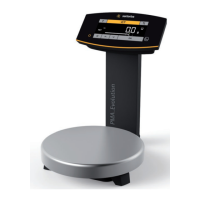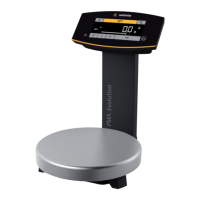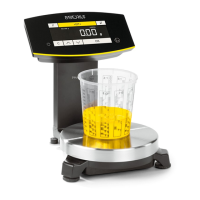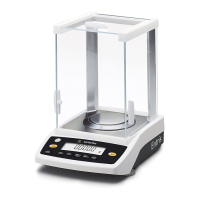20 Operating Instructions EVO1S1 | SPO1S1
Operation
y Cal.Ext. appears on the display and the negative calibration weight.
t Center the calibration weight on the weighing pan.
y The calibration is performed. The calibration is complete when CAL.DON appears
in the display.
t Remove the calibration weight from the weighing pan.
6.5 Weighing
6.5.1 Weighing with One Decimal Place
t Place the empty paint can on the weighing pan.
t Briefly press the 0 key to zero.
y The display shows “0.0 g.”
t Add the first component “484.8 g.”
t Read off the weight when the stability symbol (in this example) “g” is displayed.
t Add the other components until the desired weight (formula) is reached.
t Remove the filled paint can from the weighing pan.
Danger of scale damage!
Never close a paint can using a hammer while it is still on the weighing pan.
t When closing the paint can, place it on a firm, stable surface.
6.5.2 Weighing with Two Decimal Places
A menu setting is required for weighing with two decimal places
(see Chapter “6.7.2.4 Activating the Toggle Key”, page 24).
t Place the empty paint can on the weighing pan.
t Briefly press the 0 key to zero.
y The display shows “0.0 g.”
t Press the toggle key Z.
y The display shows “0.00 g.”
t Add the first component “205.50 g.”
t Read off the weight when the stability symbol (in this example) “g” is displayed.
t Add the other components until the desired weight (formula) is reached.
t Remove the filled paint can from the weighing pan.
When the scale is tared and the second decimal place with a resolution of 0.05 g is
activated via the toggle key Z, then weighing up to 999.95 g with two decimal
places can be performed.
Values over 999.95 g can only be weighed using one decimal place.
0.0
484.8
840.2
1218.8
1230.0
0.0
0.00
205.50
213.50
593.85
1414.2
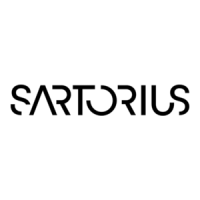
